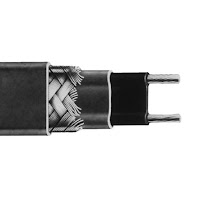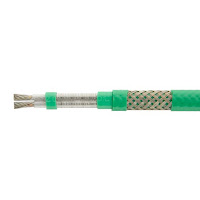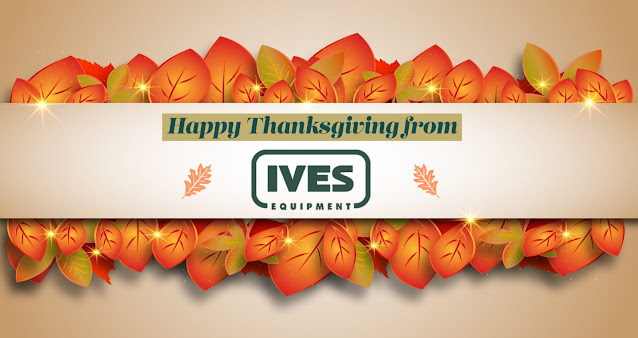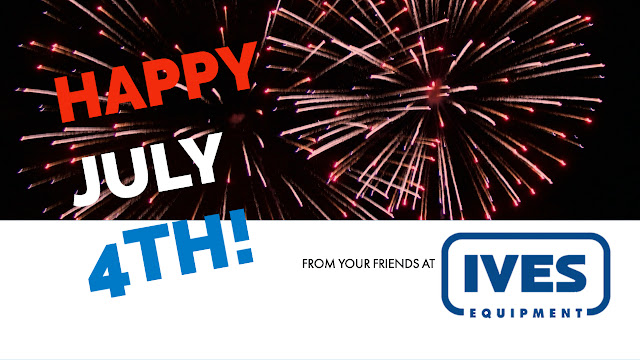Educational information on process control, industrial instrumentation, valves, valve automation and control valves. For additional information visit IvesEquipment.com or call 877-768-1600
How Often Should You Calibrate Your Toxic/Flammable Gas Detector?
When we think of gas detector calibration and how often it must be performed, it is dependent on many variables. First and foremost is determining if a gas sensor is out of calibration.
The best way to establish this is through a “bump” or functional test using a certified standard gas mixture of known concentration. If the device is functioning properly and still measuring gas within tolerance, calibration is unnecessary. Bump testing should be performed as regular maintenance on any gas detector. With the frequency depending on the sensor technology, manufacturer recommendations, specific company standard operating procedures and environment.
The two most common sensor types are NDIR and Electrochemical.
NDIR sensors tend not to drift and are calibrated prior to shipment. They require a bump testing frequency of 6 months or less to ensure performance is consistent. Calibration is only necessary if bump testing indicates the sensor is out of specification. Electrochemical sensors tend to drift over time and require bump testing every 3 to 6 months. Calibration is recommended annually or if bump testing indicates an out of spec sensor.
Due to the technology of electrochemical sensors, they will deplete over time and more rapidly if exposed to the target gas. They can also be poisoned if exposed to certain gases. If this is a risk, then bump testing more frequently is prudent. Calibration frequency can also be dependent on gas detector relevance. If it is a portable device, then it is pragmatic to bench calibrate before utilizing it in the field. If an area is planned to have significant traffic or work, then calibration should be performed for this event.
The sensor technology industry is constantly evolving, and with that newer sensors are assuring longer periods between calibration, or potentially no need to calibrate at all.
Using newly developed materials and software, sensors may last thousands of cycles without any performance decay, even if exposed to extreme environments or chemicals. The future is markedly promising.
Remember, the most important reason to calibrate your Vanguard Gas Detector is to provide accurate gas concentration readings in order that it could prevent illness, injury or death to personnel in the area. Your Vanguard may be exposed to extreme environments such as high or low temperatures, high or low humidity, or even harsh chemicals that may require more frequent calibration. With proper maintenance, your Vanguard can provide the safety your team deserves.
For more information about fixed toxic and flammable gas detection systems contact Ives Equipment. Call them at (877) 768-1600 or visit their website at https://ivesequipment.com.
The Weather is Changing. Freeze Protect Your Facility Now!
Ensure frigid temperatures don’t slow you down.
Nelson Electric Heat Trace.
LEARN MORE HERE
An Advanced, Single Housing, All-In-One Gas Detection System
SensAlarm Plus is a complete, turn-key gas detection system preassembled in one housing. The system comes standard with strobe lights, horns, high-visibility four-digit LED display, and LCD display/interface. At the heart of the SensAlarm Plus is an advanced Intelligent Sensor platform with non-volatile memory for all critical application variables and sensor data. A non-intrusive user interface enables easy operator customization and a quick review of sensor life parameters, TWA (Time Weighted Average) alarms, calibration data, and other information with date and time recording.
The SensAlarm Plus sensor head is universal in that it accepts all Sensidyne Plus sensors. Monitoring in high, low, or adjacent locations is simplified by remote mounting the sensor head using a four-conductor cable. With a sensor connected, the automatic uploading of variables, alarm values, and sensor information dramatically simplifies installation and maintenance. Transportable calibration allows sensor calibration at the installation location or in a workshop, then hot-swapping the sensor in the field.
SensAlarm Plus is the ideal gas monitoring solution for many applications. Most laboratories, gas cylinder storage facilities, industrial work areas where gases are present, control room protection or other applications where users benefit from a packaged gas detection system are common areas that need SensAlarm Plus.
DOWNLOAD THE SENSALARM PLUS DATA SHEET FROM THIS IVES EQUIPMENT WEB PAGE
For more information about Sensidyne Fixed Gas Detection products, contact Ives Equipment. Call them at 877-768-1600 or visit their website at https://ivesequipment.com.
The MIcroMod 353 RetroPAK - An Alternative for Siemens 353 and Moore 352 Users
The 353 RetroPAK is the best choice on the market to update your controllers with the least disruption to your plant operation.
The Siemens 353 and Moore 352 controllers have been extremely popular, but they are no longer manufactured or supported. MicroMod has a cost-effective migration solution offering up-to-date technology that will be available for years to come. We understand the dilemmas faced by companies that need to ahead and be able to support their control systems without abandoning their control philosophy or incurring large up-front installation costs.
The 353 RetroPAK provides the same process control functions as the Moore 352 and Siemens 353 controllers. Factory templates (in the Siemens 353 FCO style) that can be loaded from the front keypad along with a function block library in Windows configuration software mean less time spent learning new programs and re-engineering your system. The RetroPAK suits the same panel cutout, has the same simple I / O add-on, and offers dual communication networks.
DOWNLOAD THE 353 RETROPAK BROCHURE HERE
For more information about the MicroMod 353 RetroPAK, contact Ives Equipment. Call them at (877) 768-1600 or visit their website at https://ivesequipment.com.
Lead-Free Valves from ASCO and Ives Equipment
Lead is extremely toxic. Tight US safety regulations affect manufacturers of products such as drinking water fountains, reverse osmosis systems, coffee machines. and commercial kitchen equipment. A lead-free system cannot contain soldering flux with greater than 0.2% lead content, or more than a weighted average of 0.25% lead in the wetted surfaces of pipes, pipe fittings, plumbing fittings, and fixtures. Under the law, lead free is a cumulative concept. In response, Ives Equipment and ASCO have coordinated to provide a range of valve choices that meet the new regulations, are NSF certified, and come in the industry’s broadest range of characteristics in terms of pipe size, pressure or temperature ratings, and flow coefficients.
For more information visit https://ivesequipment.com/leadfree.
Coronavirus Update
In response to the 3-19-20 order from the Governor of Pennsylvania mandating todays Closure of all "non-life Sustaining" businesses – I wanted to communicate that the Ives Equipment Corporation is continuing Operations.
Our King of Prussia Facility is not adversely affected by the announcement. We remain open to support our customers.
For the safety of our employees, most are working from their homes, however we are maintaining limited staff in our facility to continue operations. We are committed to social distancing and disinfecting our office daily. Telephone, Email and Business systems are cloud based enabling remote support. We continue to respond timely and are receiving, assembling and shipping products daily. We have millions of dollars of local inventory in King of Prussia and most of our suppliers are currently running as business-as-normal.
We appreciate your support through these challenging times.
Respectfully,
Terry Ives
Ives Equipment Corp.
Industrial Control Systems (ICS) Face New Ransomware Concern
Dragos is a company that provides industrial asset identification, threat detection, and response to help organizations stay ahead of adversaries. According to Dragos intelligence and threat reports, it appears that a segment of code called Snake or EKANS, first recognized in December, 2019, has been designed as ransomware to target Windows systems used in industrial control systems (ICS).
Ransomware is malicious software that will lock up data on a computer’s drive, then travel across the network and encrypt other data. The saboteurs will then demand payment in exchange for releasing the data. Whereas industrial control system machines are high-value targets (healthcare is the other high-value target) EKANS is unusual in that the malicious code uses targeted intelligence for control systems to first encrypt the root data (files are encrypted and renamed with random 5-character extension) and then ruin the software processes and hold the data hostage.
EKANS targeted companies and are sent a ransom note with the instruction to pay the ransom in cryptocurrency. There is an email address provided for contact/replies.
Manufacturing plants, power grids, and industrial concerns (such as oil refineries) are all targets of this malicious malware.
Another feature of the EKANS ransomware is it is programed to terminate sixty-four (64) various processes on computers – most of which are ICS specific. This suggests the possibility that the EKANS may also share features similar to the Megacortex ransomware, which first appeared in early 2019. Megacortex relies on a manual method of deployment rather than self propagation ransomware deployment.
It is still unknown whether the EKANS ransomware originated from state-sponsored hackers or via real cybercriminals trying to profit from industrial control system owners. It appears that it may be the latter, based on the most recent analysis of the nature of the ransomware – analysis by Dragos researchers.
It is wise to raise awareness with among everyone who touches your systems and it would be prudent to have someone within your organization (or a consultant) tasked with keeping data security protections current. In addition, it is crucial to have ICS organizations rethink their cybersecurity leadership philosophy. In many organizations, the evangelists for cybersecurity are not equipped to exert influence in the company. Cybersecurity is still treated as a back-office job, but it needs to be treated as priority by the organizational leaders.
Dragos adversary hunters recommend keeping ICS systems segmented from the rest of the network. In this way, if just one Window machine is infected, the virus can’t mobilize to the systems that control the infrastructure. In addition, standard practices such as backups, stored offline, and including the last known good configuration data will somewhat reduce the liability of slow recovery. Guardrails such as improved access and mechanisms for authentication will also help to reduce the risk of these increasingly troubling attacks on ICS systems.
More detailed information can be accessed here:
https://dragos.com/blog/industry-news/ekans-ransomware-and-ics-operations.
Article courtesy of:
Ives Equipment
www.ivesequipment.com
(877) 768-1600
An Energy Savings Solution for Domestic Hot Water in Hospitals, Hotels, Campuses, Governmental Facilities and Correctional Institutions
 |
| The Smart System: Perfectly heated water – no hot spots, no burnouts, no recirculation. |
Self-regulating capabilities, environmental safeguards and a solid design make self-regulating technology the wisest choice, consistently maintaining your water supply at a prescribed temperature. The heating cable is fastened directly to the pipes, running their full length and creating a symbiotic relationship, which allows the cable to gauge any changes in water temperature. Sensing a decrease or increase in temperature, the conductive core then adjusts its own power output in response, and produces a consistent flow of perfectly heated water – no hot spots, no burnouts, no recirculation. The cable is designed to sustain nominal hot water temperatures of 105°F, 115°F, 125°F or 140°F.
Ives Equipment
www.ivesequipment.com
Philadelphia, PA: 610-768-1600
Baltimore, MD: 877-281-5678
York, PA: 717-227-1580
Washington, DC: 877-281-5678
Richmond,VA: 877-281-5678
Don't Risk Equipment or Safety: Freeze Protect Your Plant Now
 |
| Don't let this happen at your plant. |
Main Categories for Industrial Heat Tracing
- Industrial Pipe Tracing Cable
- Industrial Tank and Vessel Heating
- Industrial Snow Melting
- Industrial Roof Gutter Deicing
Responsible facility management includes protecting buildings and equipment against freeze damage. There are many items in any given manufacturing plant to protect, including piping systems, process instrumentation, holding tanks, transfer vessels, and valves. For each of these items, there's a good freeze protection solution to be applied. Here are some of the more common heat tracing products used in these applications.

Self-regulating Heat Tracing Cable
 These self-regulating, cut-to-length cables are normally installed in commercial and light industrial applications, to maintain pipe temperature and/or prevent freezing. These heating cables are available in 120 and 240 voltages and are designed for use in ordinary or hazardous locations (with proper selections and application). Typical applications for this product are freeze protection and low watt density process temperature systems such as product pipelines, fire protection, process water and dust suppression systems.
These self-regulating, cut-to-length cables are normally installed in commercial and light industrial applications, to maintain pipe temperature and/or prevent freezing. These heating cables are available in 120 and 240 voltages and are designed for use in ordinary or hazardous locations (with proper selections and application). Typical applications for this product are freeze protection and low watt density process temperature systems such as product pipelines, fire protection, process water and dust suppression systems.
 Constant Wattage Heat Tracing Cable
Constant Wattage Heat Tracing Cable
Constant wattage heater cable is ideal for use in maintaining fluid flow under low ambient conditions. The product is used for freeze protection and process temperature maintenance systems such as product pipelines, process water, dust suppression systems, lube oil and condensate return.MI (Mineral Insulated) Cable
MI Cable is a metal sheathed cable that uses a metallic conductor as the heating element. It is custom designed and fabricated for specific applications. MI Cable is a high performance, industrial grade heat tracing cable used for applications requiring high temperature exposure, immunity to stress corrosion, high maintain temperature, under tank heating (cryogenic tanks), high power output, constant power output over entire, rugged cable construction heater length, and extended heater life.It is critical to consider the specific application requirements for any heat tracing application. The following checklist always needs to be clearly understood:
- The mass and material of the item being traced
- Insulation availability - type and thickness
- Temperature to be maintained
- Minimum ambient temperature
- Minimum start-up temperature
- Available supply voltage
- The chemical environment - expose
- Maximum intermittent exposure temperature
- Electrical area classification










